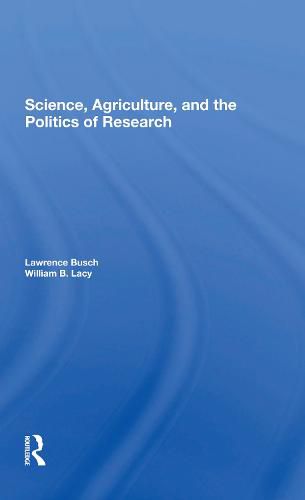Readings Newsletter
Become a Readings Member to make your shopping experience even easier.
Sign in or sign up for free!
You’re not far away from qualifying for FREE standard shipping within Australia
You’ve qualified for FREE standard shipping within Australia
The cart is loading…






Although the U.S. agricultural research system is highly esteemed and used as a model for national programs in many developing countries, surprisingly little is known about its operation, which has been publicly funded for nearly a century. This book describes the structure of that system and examines the many factors that influence the choices of research problems by agricultural scientists working within it. The authors show how the research system has evolved through a complex set of negotiations into its present form. They then examine how individuals, organizations, and disciplines influence scientists’ decisions about what to study, as well as their perceptions of research goals and beneficiaries. Drawing throughout on a wealth of primary documents, in-depth interviews, a national survey of over 1,400 practicing scientists, a survey of editors of science journals, and government statistical series, Drs. Busch and Lacy conclude by delineating the key issues that scientists, administrators, and policymakers must address as the public agricultural research system prepares to enter its second century.
$9.00 standard shipping within Australia
FREE standard shipping within Australia for orders over $100.00
Express & International shipping calculated at checkout
Although the U.S. agricultural research system is highly esteemed and used as a model for national programs in many developing countries, surprisingly little is known about its operation, which has been publicly funded for nearly a century. This book describes the structure of that system and examines the many factors that influence the choices of research problems by agricultural scientists working within it. The authors show how the research system has evolved through a complex set of negotiations into its present form. They then examine how individuals, organizations, and disciplines influence scientists’ decisions about what to study, as well as their perceptions of research goals and beneficiaries. Drawing throughout on a wealth of primary documents, in-depth interviews, a national survey of over 1,400 practicing scientists, a survey of editors of science journals, and government statistical series, Drs. Busch and Lacy conclude by delineating the key issues that scientists, administrators, and policymakers must address as the public agricultural research system prepares to enter its second century.